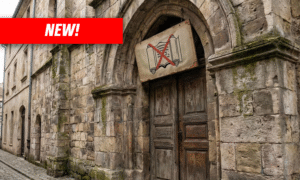(From the Maamar V’kibel Hayehudim 5687
And Sicha to Tzivos Hashem, Purim Katan 5741
And Yechidus with Reb Pinye Alter, 13 Adar I 5744)
Why are there two months of Adar? (Part A is optional)
The need for a leap year: The Torah instructs us to reckon the months following the lunar cycle, yet also observe Passover in the spring (Sources 1-3). Only the month of Adar is doubled (Source 4).
The sages debate when the mitzvot of Purim are to be observed; during Adar I or Adar II, and the final opinion is to celebrate Purim in Adar II (Source 5). The 14th of Adar I is marked as a Purim Katan [“Minor Purim”] (Source 6), and we add in our joy on that day and omit the supplicational prayers.
Purim Katan in Chabad
In a discourse on Purim Katan, 1927, the Rebbe Rayatz asks: How is it possible that the giving of the Torah – when the Jewish people were on such a lofty spiritual level – was only the “beginning” and the time of Haman’s decree, when they were at a spiritual low, was the completion of their acceptance of the Torah? (Source 7a)
The midrash tells of how Haman observed that Mordechai saw hope and encouragement in the pure faith of the Jewish children and decided that he would kill the children first (Source 8). The Rebbe Rayatz sees Haman’s plan as a parallel to Achaz’s actions. Achaz said that if there are kid goats there will be no adult goats, therefore, he sought to close the schools and thus destroy Judaism. Isaiah responded that the children will continue to learn despite the danger, and with self-sacrifice revive the Jewish nation (Source 7b). The midrash recounts that this was also Mordechai’s plan; he sat and taught Torah to 22,000 children with great sacrifice, and indeed, his efforts paid off and brought about a miracle (Source 9).
Children Sway the Battle to Victory
In 198, the Rebbe discussed this discourse, and explained that G-d, the commander-in-chief of all armies, established that the children who study Torah and observe mitzvot will turn the tide of war to victory.
The Rebbe provided a modern-day example: during the summer before the Yom Kippur War, he organized gatherings for children to study Torah and pray, as part of an advance spiritual effort before the war. After the war broke out, the Rebbe called to increase in joy, because joy can lead to victory. The Talmud says that when Adar begins, we should add in our joy (Source 10). Some believe that adding in joy only applies in Adar II, however the Rebbe instructed to be extra joyous already in Adar I, as the Rema writes, “One of glad heart always rejoices.”






